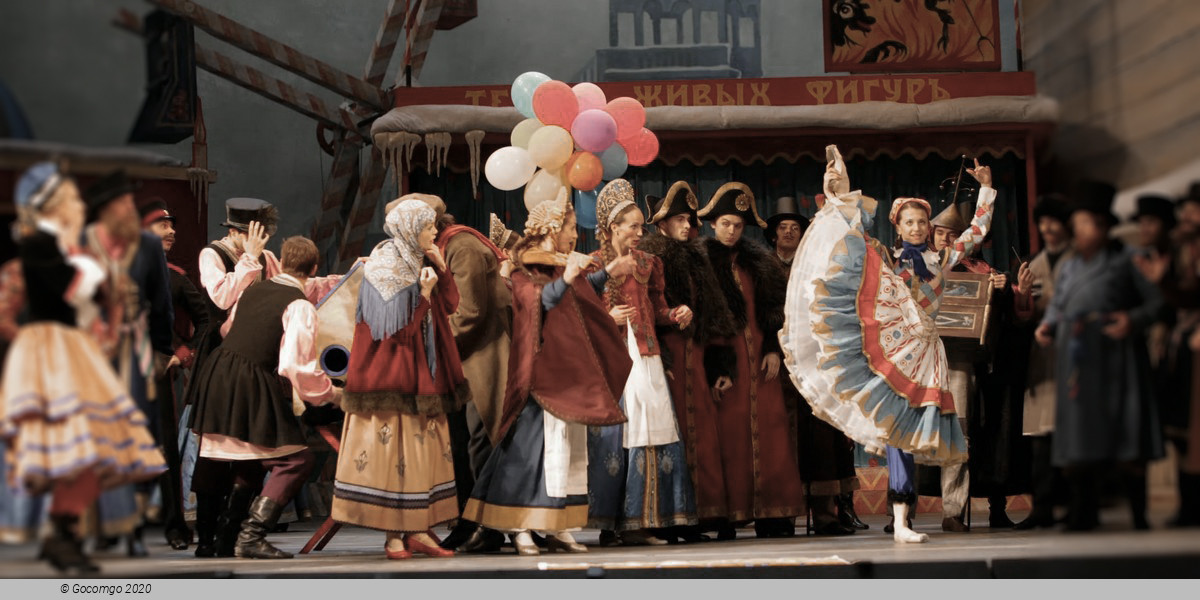Petrushka
Petrushka

Petrushka is a ballet, or more exactly scènes burlesques, in four scenes. It was composed in 1910–11 and revised in 1946. Igor Stravinsky composed the music, and, with Alexandre Benois, fashioned the libretto. Michel Fokine choreographed the ballet; Benois designed the sets and costumes. Petrushka was first performed by Sergei Diaghilev's Ballets Russes at the Théâtre du Châtelet in Paris on 13 June 1911. Vaslav Nijinsky portrayed Petrushka with Tamara Karsavina as the Ballerina. Alexander Orlov portrayed the Moor, and Enrico Cecchetti the Charlatan.
Petrushka tells the story of the loves and jealousies of three puppets. The three are brought to life by the Charlatan during the 1830 Shrovetide Fair (Maslenitsa) in Saint Petersburg, Russia. Petrushka loves the Ballerina, but she rejects him. She prefers the Moor. Petrushka is angry and hurt, and challenges the Moor. The Moor kills him with his scimitar. Petrushka's ghost rises above the puppet theatre as night falls. He shakes his fist at the Charlatan, then collapses in a second death.
Petrushka brings music, dance, and design together in a unified whole. It is one of the most popular of the Ballets Russes productions. It is usually performed today using the original designs and choreography. Grace Robert wrote in 1946, "Although more than thirty years have elapsed since Petrushka was first performed, its position as one of the greatest ballets remains unassailed. Its perfect fusion of music, choreography, and décor and its theme—the timeless tragedy of the human spirit—unite to make its appeal universal".
Russian puppets
Petrushka is a puppet. He is a character known across Europe under different names: Punch in England, Polichinelle in France, Pulcinella in Italy, Kasperle in Germany, and Petrushka in Russia. Whatever his name, he is a trickster, a rebel, and a wife beater. He enforces moral justice with a slap stick, speaks in a high-pitched, squeaky voice, and argues with the devil. His plays were formulaic and subversive. They repeated key scenes from one play to another. The plays usually ended with a dog, a policeman, or the devil dragging him away.
Empress Anna Ivanovna brought marionettes to Russia in the 18th century. These puppets were an amusement for the aristocracy. Rod puppets were an Asian import. They performed religious plays, mostly at Christmas. Petrushka, however, was a hand puppet. He was loved by the common people. He performed in street theatres and other open air venues in small portable booths or behind screens that could be easily assembled and just as easily disassembled. After the Russian Revolution, Soviet authorities forced Petrushka indoors. They wanted to be better able to monitor his subversiveness.
Libretto and story
While the original idea was Stravinsky's, Alexandre Benois provided the ethnographic details of the Shrovetide Fair and the traditions of the Russian puppet theater. And although Petrushka is frequently cited as an example of the complete integration of libretto, music, choreography, and scenic design, Stravinsky had composed significant portions of the music (chiefly the Second Tableau) before Benois became involved with the project.


